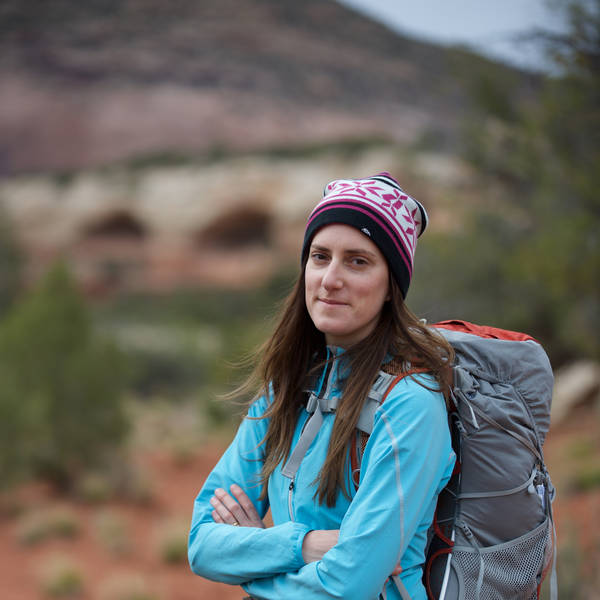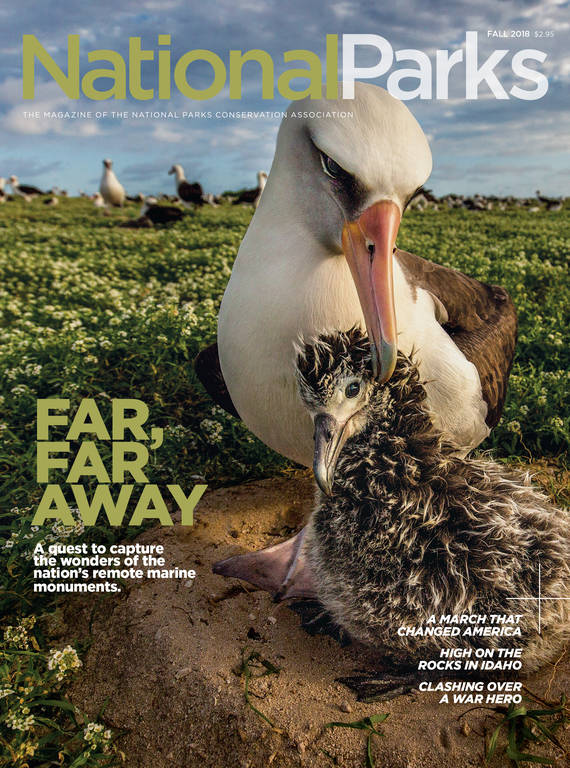Fall 2018
Wasting Away
Deer, elk and moose across the country are dying from a mysterious ailment. Can the Park Service help in the race to stop chronic wasting disease?
With the naked eye, it’s impossible to discern early signs of chronic wasting disease in elk. For years after they become infected, these monumental animals go about their lives — ambling into the high country in summer and back down to the valleys in winter, mating in fall and calving in spring. But then a few weeks before they die, they become thin, and their ribs and hipbones protrude. They salivate, droop their ears and don’t run away from humans as healthy elk would.
“They get a look on their faces that’s like the lights are on but nobody’s home,” said Margaret Wild, the former chief wildlife veterinarian for the Wildlife Health Branch of the National Park Service. “It’s very sad for the individual animal, but what makes me more sad is that this is happening time and time again. We’re not going to have as many elk out there and calves being born, and this population may not be sustainable in the long term.”
Elk pick up this degenerative disorder, in which an abnormal protein infects an animal’s nervous system and slowly destroys the brain, from blood, saliva, urine and even the soil, where the proteins remain viable for years. The illness, similar to mad cow and scrapie, is easily transmissible between animals, there is no treatment or cure, and it is always fatal.
Researchers first detected CWD in 1967, but it remained for years in a small geographic area spanning southern Wyoming and northern Colorado. Then in the 2000s, it appeared to spread — or at least it was detected more often — popping up in deer, elk and moose in new regions. Now, it has emerged in 25 states, Alberta, Saskatchewan and South Korea. In the last couple of years, it appeared in Europe for the first time — it’s uncertain how — in moose, deer and wild reindeer.
Not only is CWD spreading geographically, it is increasing in prevalence. Wildlife managers at state agencies, the U.S. Fish and Wildlife Service, the U.S. Geological Survey, the National Park Service and other organizations are concerned the disease will pare down the herds over the coming decades, which could harm whole ecosystems. Predators and scavengers that feed on deer and elk could decline, and the plants deer and elk consume could overgrow. Another big concern is whether the disease is — or will evolve to become — transmissible to human beings. So far, there are no documented cases of CWD in people, but some recent research suggests that it can infect macaques, which are close genetic relatives of humans.
Efforts to develop a vaccine are underway, but in the meantime, wildlife managers at state and federal agencies are focusing primarily on preventing the spread of the disease. The Park Service’s Wildlife Health Branch, for example, trains biologists across the country so they can recognize the symptoms and remove and test the sick animals. And parks that are within 60 miles of a known case of CWD, such as Shenandoah, Vicksburg National Military Park and Buffalo National River, collect deer and elk carcasses and test them. To prevent new outbreaks, the Park Service no longer moves deer and elk into or out of parks for reintroduction projects.
Researchers across the country are also trying to better understand how the disease operates and how it affects wildlife populations, which could help them figure out how to stop it. Two national parks, Rocky Mountain and Wind Cave, present unique opportunities to study the illness in elk because it has infected their herds for a long time; biologists first identified CWD in Rocky Mountain in 1981. These parks also have a relatively high prevalence of the disease, possibly because they have dense concentrations of the animals. (The restriction on hunting has allowed the herds to grow large, and high population density is believed to increase the likelihood of disease transmission.)
One question the Park Service’s Wildlife Health Branch investigated is whether CWD is causing elk populations to decline. A 2014 study found that the disease was in fact affecting the viability of the herds, and projections suggest that it will continue to be a problem anytime the prevalence exceeds 13 percent. Another study published in 2017 compared the genetics of elk in Rocky Mountain National Park, where the disease has persisted for decades, to disease-free populations. The results suggested that CWD was causing at least one population-level adaptation. In elk, there is a form of a gene that controls how fast CWD develops. In those with the L allele, the disease unfolds more slowly, allowing those animals to live longer and reproduce. In those with the M allele, it progresses faster. The CWD-affected herds had more elk with the L allele than other herds.
“It’s very exciting,” says Ryan Monello, who previously was a wildlife disease ecologist at the Wildlife Health Branch and now works for the Park Service in Hawaii. “This idea that a pathogen is occurring in a population and affecting how genes get passed on is a rare thing to observe in wildlife populations.”
Although the study indicates that herds are adapting slowly to CWD through natural selection, it’s unclear whether the Park Service can rely on those changes to save elk. It’s possible that the elk with the adaptive L alleles have disadvantages or vulnerabilities that scientists don’t know about yet. The Wildlife Health Branch is continuing to monitor the herds.
Meanwhile, in Wind Cave National Park, where the prevalence of the disease jumped from 3 percent in female elk to 10 percent over the course of about 10 years, the Wildlife Health Branch is working with park staff to test a way to reduce the disease. Several years ago, when park staff were planning to cull overabundant elk to ease the pressure on plant communities, they decided to use the opportunity to study how decreasing the population would affect the incidence of CWD.
Over the last two winters, volunteers shot elk in Wind Cave, painstakingly hauling the 600-plus-pound carcasses out of the woods intact to reduce the risk of contaminating the environment (and so they could donate the meat of animals that tested negative for CWD. The Centers for Disease Control and Prevention advises hunters to test deer and elk and to avoid eating meat from infected animals). Researchers are also following about 40 elk with radio collars to track their movements and collect information about when they die — and if they die of CWD.

National Parks
You can read this and other stories about history, nature, culture, art, conservation, travel, science and more in National Parks magazine. Your tax-deductible membership donation of $25 or more entitles…
See more ›“It seems kind of counterintuitive — if you’re concerned about sustainability, why would you go in and kill elk?” Margaret Wild said. “It’s like when you fly on an airplane and everybody’s all crammed together, and next thing you know you have a cold. We’re hoping that by reducing the number of elk and their contacts with each other, we’ll be able to reduce the occurrence of the disease.” It’s expected to take five to seven years to collect enough data for a meaningful analysis.
Negative public sentiment has led researchers to shut down some studies into the impact of culling, but preliminary evidence suggests that it can be a useful strategy in combating CWD. A study in Illinois indicates that reducing the number of deer in areas where the disease is rampant is helping to contain the illness. The Park Service’s research is one puzzle piece that will help fill in the picture of whether this is an effective management strategy.
“That’s the way science progresses — in these baby steps,” Wild said. “I saw my first case of CWD in 1989, and over the last few decades, we’ve learned so much. It’s not all good news, but at least we can be making wiser decisions, and someday we’ll know a better way to control it.”
About the author
-
 Kate Siber Contributor
Kate Siber ContributorKate Siber, a freelance writer and correspondent for Outside magazine, is based in Durango, Colorado. Her writing has appeared in National Geographic Traveler and The New York Times. She is also the author of “National Parks of the U.S.A.,” a best-selling children’s book.


